Ed Gorman's Blog, page 132
April 22, 2013
C.J. Box on Tom Wolfe from The Mystery Scene blog
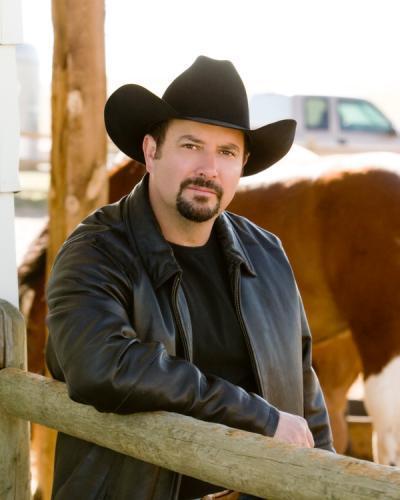
C.J. Box on Tom WolfeWritten by C.J. Box
It often stuns me—and not in a good way—when I hear other mystery authors say they don’t read beyond our genre. Some of them, it seems, hardly read at all!I make it a point to read widely. Fiction, nonfiction, literary, mystery…that’s how my to-be-read pile is arranged. One reason for this—as well as pure curiosity—is strategic. I want my own books to flash glimmers of the real world beyond the plot or whodunit. I think it makes the books richer, and I know when I read that’s what I’m on the lookout for.Tom Wolfe is as much journalist-slash-sociologist as novelist, and it’s one of the many things I appreciate about him. Whether it’s the New York City of Bonfire of the Vanities, the New South of A Man in Full, or the “Dupont University” of I Am Charlotte Simmons, the reader experience is intense because the novels provide total immersion in specific places. InBack to Blood, Wolfe zeros his rifle scope on the present day Miami of racial and ethnic tribalism. Whew!
for the rest go here: http://mysteryscenemag.com/index.php?...
Along Came Diesel
by Miranda James
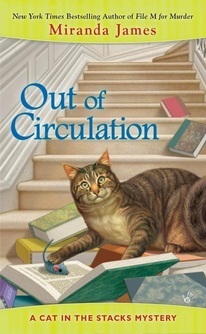
(from Carolyn Hart's website)
Back in 2009 when my Wanda Nell Culpepper series came to an end (not by my choice or my editor’s but due to less than stellar sales figures), I was casting about for ideas for a new series. My editor and her boss suggested I consider writing about a librarian with a cat.
I’m a librarian, and I had two cats at the time, so I thought that was a pretty great idea. The minute I started thinking about the cat in the series, I knew exactly what breed he would be and his name. Back in 2001, while visiting a friend, I met the first Maine Coon cat I’d ever seen. His name was “The Diesel” – after a Washington Redskins player with that nickname – and he was huge, weighing in at about forty pounds. He was a gentle giant and utterly charming. Thus I decided to model the cat in my new series after him, but I called my fictional Maine Coon simply Diesel.
for the rest go here:http://www.carolynhart.com/guest-auth...
Diesel and Charlie’s latest adventure is chronicled in Out of Circulation (Berkley Prime Crime).

 Just click the thumbnails to see larger images of the cats who reside with Miranda James.
Just click the thumbnails to see larger images of the cats who reside with Miranda James.
Published on April 22, 2013 13:47
April 21, 2013
Director Don Siegel Recalls The Making of Flaming Star with Elvis
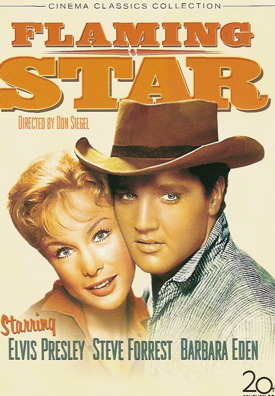
Director Don Siegel Recalls
The Making of Flaming StarBetween 1945 and 1981, Don Siegel directed 35 Hollywood feature films.Flaming Star in 1960 came right in the middle of Siegel’s career and closed out his most prolific period in the late 1950s. While not considered one of filmdom’s A-list directors, Siegel brought a workmanlike reputation to the 20th Century Fox project with Elvis Presley in the marquee role. He even had some experience with a teen idol, having directed Fabian in Hound Dog Man the year before.Two years after his death in 1991, Siegel’s commentaries on his films were collected into A Siegel Film: An Autobiography. The book was divided into chapters for each of the director’s films, with Chapter 21 being devoted to Flaming Star. The following information comes from that volume.Nunnally Johnson, one of the industry’s most respected writers (The Grapes of Wrath, The Three Faces of Eve), wrote the original screenplay with Marlon Brando in mind for the role of Pacer. (“Incredibly, it became a vehicle for Elvis Presley,” Siegel commented.) The script was based on a novel by well-known Western writer Clair Huffaker. After reading the screenplay, Siegel sensed problems and felt the need to have a “straightforward chat” with producer David Weisbart.Siegel’s first question of Weisbart was, “Why Presley?” The producer responded, “He’s a big box-office star. Don’t you think he can do it?” Avoiding a direct answer, Siegel said, “Surely you are aware of the need to refocus on the script?” Weisbart then noted of Presley, “Certainly he’s no Brando. On the other hand, Brando’s no Presley.”• Flaming Star script required “considerable” rewriteThe two finally agreed that, with Presley in the lead, the script required a “considerable” rewrite. There was a hitch, though. Nunnally absolutely refused to alter his screenplay. Fortunately, Huffaker agreed to tackle the job. Still, whatever the script’s final form might be, Siegel was still worried. “Would the public accept a serious story with Elvis playing a half-breed?” he wondered. And Siegel told Huffaker that there was another problem. The studio wanted Elvis to sing at least ten songs in the picture. “Supposing,” the director suggested, “we had Elvis sing over the main titles and sing one simple song at the party, less than a minute into the picture?” Huffaker responded, “You’ll never get away with it.”for the rest go here:
http://www.elvis-history-blog.com/don...
Published on April 21, 2013 10:00
April 20, 2013
SARAH WEINMAN AN UNSUNG HEROINE: Dorothy B. Hughes

FEBRUARY 2004SARAH WEINMANMYSTERY STRUMPETAN UNSUNG HEROINEIn trying to legitimize crime fiction for both the literary and academic crowds, pulp writers of old are being critiqued in a manner unheard of back when these writers were in their prime. Now it’s not uncommon to find a crime fiction class on such books at your local university, academic treatises on various writers going into painstaking detail about their life and work, and untold essays by students plumbing the depths of these books --even when there’s not necessarily much depth to them at all. Still, what this focus has done is bring previously forgotten writers to the forefront. Raymond Chandler and Dashiell Hammett have been elevated to the literary canon for so many years that it’s hard to remember a time when they were still only “pulp” writers. But Jim Thompson, David Goodis, Chester Himes, John D. MacDonald, and Charles Willeford have only recently merited scholarly study.
No doubt more writers from a bygone era will be studied in great detail, and thanks to the work of theFeminist Press, it’s a good bet that Dorothy B. Hughes will be the subject of many university essays to come. Late last year, the City University of New York-based publishing house released In A Lonely Place, Hughes’ eleventh novel, as one of the three launch titles for their “Femmes Fatales” program, an initiative to bring back female pulp writers into print. It was also the basis for the eponymous 1950 film noir classic starring Humphrey Bogart and Gloria Grahame. But if you’d seen the movie prior to reading the book, you’d be in for a shock. The movie took some serious liberties with the story in creating its lead character of Dix Steele, a man accused of a crime he did not commit. The Dix of Hughes’s novel, whose point of view is the only one the reader is privy to, is a very different animal indeed: one whose creation was far ahead of its time.
The storyline of In a Lonely Place is rather straightforward; young women are being murdered in Los Angeles at a fairly rapid clip. Even though there are alleged sightings of the killer, the police are at a loss to catch him. Only a few months earlier, war veteran Dixon Steele moved from back East to try his luck at writing a novel. He’s firmly ensconced in a plush apartment belonging to a former classmate conveniently out of the country for an extended period. He’s renewing his acquaintance with best buddy Brub Nicolai, an LAPD detective, and even making time for romance with his tart-tongued actress neighbor Laurel Gray. Everything seems to be going right for Dix -- so why do things feel so wrong? Not only is he not writing, but he’s feeling the pinch. Laurel starts to cool on him, and Brub’s wife Sylvia is more open in her disapproval. Things are closing in tighter and tighter until he gets his ultimate comeuppance in an ending that leaves him an utterly broken man.
for the rest go here: http://www.bookslut.com/mystery_strum...
Published on April 20, 2013 10:41
March 15, 2013
My last post for awhile
This weekend Carol and I are driving up to Rochester, MN. where the process for my Stem Cell Transplant begins at Mayo. If everything goes all right I'll be up there 4-6 weeks. Then I'll be blogging again.
Carol will be posting every day on how I'm doing. Here's the link.
Here are the instructions:
Go to caringbridge.org
On the right it says VISIT SOMEONE. Under that is a rectangular field
that says "enter site or planner." In that field, type edgorman. (lower
case letters, no space)
Click the pink Visit button.
You can click on Sign the Guest Book and leave a message or just read
the postings that we write about what's happening with Ed's care.
That's it!
Carol will be posting every day on how I'm doing. Here's the link.
Here are the instructions:
Go to caringbridge.org
On the right it says VISIT SOMEONE. Under that is a rectangular field
that says "enter site or planner." In that field, type edgorman. (lower
case letters, no space)
Click the pink Visit button.
You can click on Sign the Guest Book and leave a message or just read
the postings that we write about what's happening with Ed's care.
That's it!
Published on March 15, 2013 13:01
March 14, 2013
Amazon has now published DEATH GROUND in trade pb

FormatsAmazon priceNew fromUsed fromExpandKindle Edition$3.99 ----ExpandHardcover, Large Print$28.99$28.99$28.98ExpandPaperback$14.95$14.95--ExpandMass Market Paperback-- $1.26$0.01Unknown Binding-- --$6.99Audible Audio Edition, Unabridged$14.95or Free with Audible 30-day free trial
From Publishers WeeklyThis is a western for grown-ups, written in a lean, hardboiled style that should appeal to readers who "don't read westerns." In the waning years of the frontier, in an unnamed territory, bounty-hunter Guild celebrates a joyless 54th birthday in a brothel. Guild is acting as bodyguard for Merle Rig, a very unpleasant man who is soon murdered, along with a teenager whom Guild had reluctantly hired as an assistant. Suspicion points to Kriker, a notoriously violent mountain man, bank robber and leader of a secluded settlement of former low-lifes. The laconic Guild, carrying his own personal guilt about a dead child, sets out to bring Kriker to justice, accompanied by the nasty Bruckner brothers, sheriff's deputies. Kriker, meanwhile, is nursing his adoptive daughter, using a "granny woman's" folk medicine that is useless against what turns out to be cholera. Gorman ( Guild and the Jack Dwyer mysteries) uses the period setting effectively and draws his characters with a deft hand.
Copyright 1988 Reed Business Information, Inc. --5.0 out of 5 stars DEATH GROUND by Ed Gorman October 24, 2009By Benjamin Boulden of GravetappingFormat:Mass Market PaperbackLeo Guild is an aging bounty hunter. He is a former lawman, father and husband, but that is all behind him. Now he rides alone. He is melancholy, intelligent and violent; when he needs to be. He also has a past that sticks with him. He killed a little girl. The courts forgave him, but he can't find the heart to forgive himself.
DEATH GROUND opens on the evening of Guild's 54th birthday. In lonely celebration he makes a date at the local brothel with a young "straw-haired" girl. Things don't go as expected with the girl and his birthday truly turns for the worse when he is summoned to the Sheriff's office.
Two men are dead. One--Merle Rig--hired Guild as a bodyguard and the other--Kenny Tolliver--was technically Guild's employee. He hired Kenny to protect Rig while he paid a visit to the "straw-haired" girl. As he looks at the cadavers on the heavy mortician's tables he figures his job is gone and it is time to ride on, but first he pays a visit to Kenny's mother. A scene that unsettles Guild and also piques his interest; Kenny's mother knew Rig and Kenny palled around with a couple local deputies.
Leo Guild decides he can't leave town until he figures who really killed the pair and why. He has a feeling it is not the violent mountain man being blamed by the Sheriff, but he doesn't have many suspects. He doesn't have anything but a hunch, really.
DEATH GROUND isn't a traditional Western. It, like all of Gorman's Westerns, is a noir mystery wrapped in the trappings of the Old West. That is not to say that the historical element isn't accurate or interesting, because it is. It is also central to the story, but an Ed Gorman Western is more of a historical mystery than anything else. A hardboiled historical mystery at that.
The prose is tough and tender in varying shades. It defines the story, action, and protagonist with a lean, smart and melancholy and literate style:
"Then he started digging snow up with both hands, and he covered them good, the two of them, and then he stood up and looked out on the unfurling white land. There was blue sky and a full yellow sun. Warmer now, there was even that kind of sweetness that comes on sunny winter days. It made him think of pretty women on ice skates, their cheeks touched perfect red by the cold, their eyes daring and blue."
Leo Guild is an everyman. He is the man who does what needs to be done. He isn't a hero, or a villain, but rather he is simply a man; a man who has seen much, done much, and lost much. Guild is an example of what makes Ed Gorman's fiction so damn good: characters that are measured and three-dimensional; characters that act, feel and sound real. His male characters are strong and pitiful, lustful and scared, vain and dangerous, lonely and weak--generally all at the same time--and more importantly they are recognizable. And his female characters exhibit the same steady qualities. Neither wholly good nor bad, just human.
DEATH GROUND is a Western that should have wide appeal. It will please the traditionalist with its rugged description of frontier life and the people who settled it. It will also introduce readers of hardboiled crime fiction to a new genre, but mostly it will please any reader who wants something tangible and meaningful mixed into a well-told, excellently plotted and immensely entertaining novel.
-Gravetapping
Published on March 14, 2013 14:34
March 13, 2013
Carolyn Hart, Margaret Maron Oconee Press
A Settling of Accounts involves a seemingly conventional American antiques dealer returning to London after an absence of decades. We slowly begin to realize that as quiet and pleasant as our heroine is she is also a gritty survivor of the OSS during the big war in London.
Hart's heroines are never swooning girls; they're strong-willed women. And in this case that means there's somebody she would like to murder. I especially liked the atmospherics of wartime London. Hart is also superb with scenes of chase and mystery.
A fine addition to both the Oconee Carolyn Hart library.
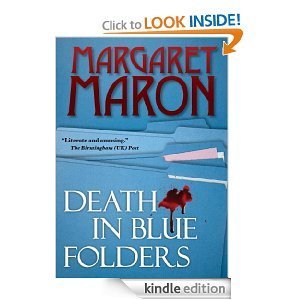
This is a true whodunit and a good one. Lt. Sigrid Harald must find out who murdered a lawyer who’d been planning his retirement. Seems his office safe was filled with secrets that needed to remain secret.
The cast is colorful one and Maron keeps us turning pages with realistic and serio-comic problems badgering Harald—such as apartment hunting in blistering August and being forced to confront the horrifying fact that she doesn’t own an evening gown.
As with the early novels of Carolyn Hart, you can see here the makings of a star.
Published on March 13, 2013 13:28
March 11, 2013
Weasels Ripped My Flesh from Movie Morlocks

by Richard Harland Smith from Movie Morlocks
Don’t get me wrong — cinemania will always be my favorite mania… but I do understand and appreciate other kinds of madness and passion. The compulsion to collect vinyl, for example (records, I mean, not pants) or for following the Grateful Dead, or for owning first editions, or for reading and even owning original copies of the men’s magazines that proliferated on America’s newsstands after World War II. I know, you hear “men’s magazines” and you immediately think Playboy or Gent or Hustler but I’m not talking about skin mags. No, I mean men’s adventuremags, monthly collections of pulp fiction, he-man tales of derring-do (did you even know it was spelled that way?! Five hundred years later and we’re still dancing to Chaucer’s tune.) that were popular with the generation of American males who had come home from conflicts in World War II and Korea with an unquenchable taste for two-fisted tales of bravery, resolve, vengeance, lust, greed, cunning and every other quality Ava Gardner looked for in a husband. Before porn wormed its way out of the back room and onto the high shelf, before Hugh Hefner arranged the marriage of Joe Sixpack and Rosie Palmer, before they became obsessed with their manscapes and their electronics and their microbrews and how to grill the perfect steak, American men thrilled to the ephemeral offerings of such established and fly-by-night publications as Man’s Life, Man’s Look, Real Men, For Men Only, Sir!, Stag, Battle Cry, Argosy, Adventure, True Adventures, Adventure Life, Escape to Adventure, Saga, Rage, Gusto and many more. (Experts in this field tend to disagree but one estimate of the total number of men’s adventure magazines that came and went between 1950 and 1980 runs to 150.) Running low on word count (all the better to read in the donnicker) but high on testosterone, these tales ranged from true war chronicles of courage behind enemy lines (Robert F. Dorr’s “Bayonet Killer of Heartbreak Ridge”) to EC Comics-style cautionary tales of the awful wages of sin (Harlan Ellison’s “Death Climb”), to exposes purporting to take the reader into the throbbing demimonde of casual sex (Gilbert Nash’s “Beat Girls: Worshippers of Zen and Sin”) to gonzo revenge-of-nature stories about humans pitted against a proactive and predatory nature (“Weasels Ripped My Flesh,” the classic Man’s Life story penned by the pseudonymous “Mike Kamens,” whose identity was never revealed and remains to this day… unknown.) If your fists aren’t curling just by reading this, you should just stop reading now.If, however, this kind of thing seems right up your alley, you’ll probably want to get on eBay and start bidding on remaining issues of these long-MIA magazines. Assembling a small collection would probably only run you a few hundred or thousand dollars… orrrrrr you could just pop down a double-sawbuck for Weasels Ripped My Flesh! Two-Fisted Stories from Men’s Adventure Magazines of the 1950s, ’60s, & ’70s. Put out by the California-based independent publisher New Texture, this concordance collects two dozen of the stories that first appeared between the lushly-illustrated covers of assorted men’s adventure magazines, among them Walter Kaylin’s “Bar Room Girl Who Touched Off a Tribal War” (first published in Male Main June 1966), Bruce Jay Friedman’s “Eat Her … Bones and All” ( Gent , December 1954), Robert Silverberg’s “Trapped by the Mau Mau Terror” ( Exotic Adventures , 1959), Vic Pate’s “Chewed to Bits by Giant Turtles” (Man’s Life, May 1957), Jim McDonald’s “Grisly Rites of Hitler’s Monster Flesh Stripper” ( Man’s Story , March 1965), Ken Krippene’s “I Married a Jungle Savage” (Sir!, November 1962), Joanne Beardon’s “I Went to a Lesbian Party” (All Man, May 1964) and, of course, the title track, Weasels Ripped My Flesh ( Man’s Life , September 1956). If the title sounds oddly familiar, it may be because Frank Zappa cadged it for the title of a 1970 Mothers of Invention album, and its title track, making it one of those classic titles that has been referenced more often than actually read. Unavailable for years, the story leads this collection, like a dogface taking point, like Korean war hero Donn F. Porter, “The Bayonet Killer of Heartbreak Ridge,” whose story is also told here for the first time since it was published in Man’s Magazine in October 1964.
for the rest go here: http://moviemorlocks.com/2013/03/08/w...
Published on March 11, 2013 14:07
March 10, 2013
Joseph Lewis

MONDAY, DECEMBER 10, 2007Joseph LewisI watched Gun Crazy last night and was struck as always by the folk tale power of the story and the bravado with which it was directed. Mystery writer Mike Nevins has written a long and to me definitive piece-interview on Lewis' career and through it I came to understand Lewis' notion that to have suspense you first need to have characters who are slightly askew. You never quite understand their motives so you never quite know what to expect from them.
Most evaluations of Lewis' career speculate what he would have done with A picture budgets. He ended up doing a lot of TV work. He made a good deal of money but presumably wasn't as satisfied with his Bonanza stories as he was with his more personal work. He started in westerns and finished in westerns.
As for what he would have done with A-picture money...who knows. But there's at least a chance that he was most comfortable working with the money he was given. Hard to imagine that pictures as gritty as Gun Crazy and The Big Combo could have been shot the way he wanted them to be in an A-picture environment. These are films that took no prisoners and Hwood, especially in those days, wasn't real keen on grim movies.
I found this evaluation of Lewis by David Thomson, my favorite film critic:
"There is no point in overpraising Lewis. The limitations of the B picture lean on all his films. But the plunder he came away with is astonishing and - here is the rub - more durable than the output of many better-known directors...Joseph Lewis never had the chance to discover whether he was an "artist," but - like Edgar Ulmer and Budd Boetticher - he has made better films than Fred Zinnemann, John Frankenheimer, or John Schlesinger." - David Thomson (The New Biographical Dictionary of Film, 2002)
Published on March 10, 2013 18:43
March 9, 2013
movie movie
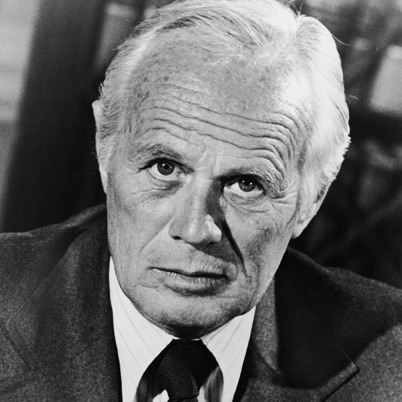
From Roger Freidman's great column copyright 2008 http://www.foxnews.com/story/0,2933,3...
Richard Widmark: 'I Don't Have a Great Movie'
Richard Widmark died on Wednesday at age 93. I had the pleasure of meeting and interviewing him in January 2002 at his home in Connecticut with my friend John Connolly.
The consummate actor and gentleman, Widmark should have been given a Lifetime Achievement award by the Oscars a long time ago. He was only nominated once, in 1947, for his debut as Tommy Udo in "Kiss of Death."
He laughed when we talked about that film — and the famous scene in which he pushes wheelchair-bound Mildred Dunnock down a flight of stairs.
"You make 50 movies over a lifetime and that’s the one they remember you for," he chuckled.
He told me that he never had "a great movie," but I differ. He had several: "Night and the City," "Pick Up on South Street," "The Street With No Name" and "No Way Out" are all classics. Today, you can see a lot of Widmark in Viggo Mortensen’s face. He was the king of film noir; Mortensen seems sometimes to be echoing his pathos.
Widmark was married for 50 years to the same woman, his beloved Jean. When she died in 1997, he married one more time to Susan Blanchard, the third wife of the late Henry Fonda. They were friends and neighbors. It was through Peter and Becky Fonda that I got to talk to Richard; Peter still considered Susan his "mom." I am so grateful it worked out.
Here are a couple of things he told me for our interview: Karl Malden was his oldest friend. They’d met in 1938 doing radio work. About his contemporary, Robert Mitchum: "I liked old Bob but he was a real bullshitter. We were in different worlds. He was in the booze world."
Bette Davis, he said, was "tough." Marilyn Monroe "was a ding dong. I liked old Marilyn. No one could get her out on the set."
Widmark’s last film was "True Colors" in 1991. After that, he didn’t see the need to continue. His favorite actors? "Spencer Tracy, Henry Fonda, Jimmy Stewart. I’d go back to work if I could work with those guys. I loved them."
Just a great guy, and such a wonderful actor. His death marks the end of an era.
GRAND HOTEL
We watched it on TCM last night. Despite the barqoue qualities of the script (both dialogue and plot) it did present the Old World in such detail that at moments it had the qualities of a documentary. James Wolcott nailed it all this morning:
Crystal Blue Persuasion
"Watching Grand Hotel on TCM, it occurred to me, not for the first time, that the world was never more beautiful than it was in classic Hollywood black and white. Certainly women never were. Black and white gave their eyes and skin a glisten, their hair a backlit aurora, that now seems to belong to some now-gone mechanical age of the gods. Grand Hotel seems all ink and ivory, with little intermittent gray. The image of Garbo's ballerina, crumpled on the floor, her tutu a luminous tissue paper white, intercut with John Barrymore's profile as he tenderly spies on her, his presence shielded in shadow--it makes you wish the movie could dispense with the Old World weariness of the dialogue and just keep on contemplating itself. (Dinner at Eight, so much more fun.) In Joan Crawford's scenes with Wallace Beery, you can see each eyebrow, mouth corner, pupil, and shapely ankle individually doing its dramatic bit to create a composite portrait of a secretary to a tycoon type leveraging her assets while maintaining a cool deposit of pride and reserve. Inspired by the Siren's Joan Crawford birthday wishes, NYCweboy unveils his shrine to Cukor's The Women, where Crawford and Shearer had their memorable slag match over some dope named Steve."
for the rest go here
http://www.vanityfair.com/politics/bl... Roger Freidman's great column copyright 2008 http://www.foxnews.com/story/0,2933,3...
Richard Widmark: 'I Don't Have a Great Movie'
Richard Widmark died on Wednesday at age 93. I had the pleasure of meeting and interviewing him in January 2002 at his home in Connecticut with my friend John Connolly.
The consummate actor and gentleman, Widmark should have been given a Lifetime Achievement award by the Oscars a long time ago. He was only nominated once, in 1947, for his debut as Tommy Udo in "Kiss of Death."
He laughed when we talked about that film — and the famous scene in which he pushes wheelchair-bound Mildred Dunnock down a flight of stairs.
"You make 50 movies over a lifetime and that’s the one they remember you for," he chuckled.
He told me that he never had "a great movie," but I differ. He had several: "Night and the City," "Pick Up on South Street," "The Street With No Name" and "No Way Out" are all classics. Today, you can see a lot of Widmark in Viggo Mortensen’s face. He was the king of film noir; Mortensen seems sometimes to be echoing his pathos.
Widmark was married for 50 years to the same woman, his beloved Jean. When she died in 1997, he married one more time to Susan Blanchard, the third wife of the late Henry Fonda. They were friends and neighbors. It was through Peter and Becky Fonda that I got to talk to Richard; Peter still considered Susan his "mom." I am so grateful it worked out.
Here are a couple of things he told me for our interview: Karl Malden was his oldest friend. They’d met in 1938 doing radio work. About his contemporary, Robert Mitchum: "I liked old Bob but he was a real bullshitter. We were in different worlds. He was in the booze world."
Bette Davis, he said, was "tough." Marilyn Monroe "was a ding dong. I liked old Marilyn. No one could get her out on the set."
Widmark’s last film was "True Colors" in 1991. After that, he didn’t see the need to continue. His favorite actors? "Spencer Tracy, Henry Fonda, Jimmy Stewart. I’d go back to work if I could work with those guys. I loved them."
Just a great guy, and such a wonderful actor. His death marks the end of an era.
GRAND HOTEL
We watched it on TCM last night. Despite the barqoue qualities of the script (both dialogue and plot) it did present the Old World in such detail that at moments it had the qualities of a documentary. James Wolcott nailed it all this morning:
Crystal Blue Persuasion
"Watching Grand Hotel on TCM, it occurred to me, not for the first time, that the world was never more beautiful than it was in classic Hollywood black and white. Certainly women never were. Black and white gave their eyes and skin a glisten, their hair a backlit aurora, that now seems to belong to some now-gone mechanical age of the gods. Grand Hotel seems all ink and ivory, with little intermittent gray. The image of Garbo's ballerina, crumpled on the floor, her tutu a luminous tissue paper white, intercut with John Barrymore's profile as he tenderly spies on her, his presence shielded in shadow--it makes you wish the movie could dispense with the Old World weariness of the dialogue and just keep on contemplating itself. (Dinner at Eight, so much more fun.) In Joan Crawford's scenes with Wallace Beery, you can see each eyebrow, mouth corner, pupil, and shapely ankle individually doing its dramatic bit to create a composite portrait of a secretary to a tycoon type leveraging her assets while maintaining a cool deposit of pride and reserve. Inspired by the Siren's Joan Crawford birthday wishes, NYCweboy unveils his shrine to Cukor's The Women, where Crawford and Shearer had their memorable slag match over some dope named Steve."
for the rest go here
http://www.vanityfair.com/politics/bl...
From Roger Freidman's great column copyright 2008 http://www.foxnews.com/story/0,2933,3...
Richard Widmark: 'I Don't Have a Great Movie'
Richard Widmark died on Wednesday at age 93. I had the pleasure of meeting and interviewing him in January 2002 at his home in Connecticut with my friend John Connolly.
The consummate actor and gentleman, Widmark should have been given a Lifetime Achievement award by the Oscars a long time ago. He was only nominated once, in 1947, for his debut as Tommy Udo in "Kiss of Death."
He laughed when we talked about that film — and the famous scene in which he pushes wheelchair-bound Mildred Dunnock down a flight of stairs.
"You make 50 movies over a lifetime and that’s the one they remember you for," he chuckled.
He told me that he never had "a great movie," but I differ. He had several: "Night and the City," "Pick Up on South Street," "The Street With No Name" and "No Way Out" are all classics. Today, you can see a lot of Widmark in Viggo Mortensen’s face. He was the king of film noir; Mortensen seems sometimes to be echoing his pathos.
Widmark was married for 50 years to the same woman, his beloved Jean. When she died in 1997, he married one more time to Susan Blanchard, the third wife of the late Henry Fonda. They were friends and neighbors. It was through Peter and Becky Fonda that I got to talk to Richard; Peter still considered Susan his "mom." I am so grateful it worked out.
Here are a couple of things he told me for our interview: Karl Malden was his oldest friend. They’d met in 1938 doing radio work. About his contemporary, Robert Mitchum: "I liked old Bob but he was a real bullshitter. We were in different worlds. He was in the booze world."
Bette Davis, he said, was "tough." Marilyn Monroe "was a ding dong. I liked old Marilyn. No one could get her out on the set."
Widmark’s last film was "True Colors" in 1991. After that, he didn’t see the need to continue. His favorite actors? "Spencer Tracy, Henry Fonda, Jimmy Stewart. I’d go back to work if I could work with those guys. I loved them."
Just a great guy, and such a wonderful actor. His death marks the end of an era.
GRAND HOTEL
We watched it on TCM last night. Despite the barqoue qualities of the script (both dialogue and plot) it did present the Old World in such detail that at moments it had the qualities of a documentary. James Wolcott nailed it all this morning:
Crystal Blue Persuasion
"Watching Grand Hotel on TCM, it occurred to me, not for the first time, that the world was never more beautiful than it was in classic Hollywood black and white. Certainly women never were. Black and white gave their eyes and skin a glisten, their hair a backlit aurora, that now seems to belong to some now-gone mechanical age of the gods. Grand Hotel seems all ink and ivory, with little intermittent gray. The image of Garbo's ballerina, crumpled on the floor, her tutu a luminous tissue paper white, intercut with John Barrymore's profile as he tenderly spies on her, his presence shielded in shadow--it makes you wish the movie could dispense with the Old World weariness of the dialogue and just keep on contemplating itself. (Dinner at Eight, so much more fun.) In Joan Crawford's scenes with Wallace Beery, you can see each eyebrow, mouth corner, pupil, and shapely ankle individually doing its dramatic bit to create a composite portrait of a secretary to a tycoon type leveraging her assets while maintaining a cool deposit of pride and reserve. Inspired by the Siren's Joan Crawford birthday wishes, NYCweboy unveils his shrine to Cukor's The Women, where Crawford and Shearer had their memorable slag match over some dope named Steve."
for the rest go here
http://www.vanityfair.com/politics/bl...
From Roger Freidman's great column copyright 2008 http://www.foxnews.com/story/0,2933,3...
Ed here: Richard Widmark DID have a great movie--Night & The City.Richard Widmark: 'I Don't Have a Great Movie'
Richard Widmark died on Wednesday at age 93. I had the pleasure of meeting and interviewing him in January 2002 at his home in Connecticut with my friend John Connolly.
The consummate actor and gentleman, Widmark should have been given a Lifetime Achievement award by the Oscars a long time ago. He was only nominated once, in 1947, for his debut as Tommy Udo in "Kiss of Death."
He laughed when we talked about that film — and the famous scene in which he pushes wheelchair-bound Mildred Dunnock down a flight of stairs.
"You make 50 movies over a lifetime and that’s the one they remember you for," he chuckled.
He told me that he never had "a great movie," but I differ. He had several: "Night and the City," "Pick Up on South Street," "The Street With No Name" and "No Way Out" are all classics. Today, you can see a lot of Widmark in Viggo Mortensen’s face. He was the king of film noir; Mortensen seems sometimes to be echoing his pathos.
Widmark was married for 50 years to the same woman, his beloved Jean. When she died in 1997, he married one more time to Susan Blanchard, the third wife of the late Henry Fonda. They were friends and neighbors. It was through Peter and Becky Fonda that I got to talk to Richard; Peter still considered Susan his "mom." I am so grateful it worked out.
Here are a couple of things he told me for our interview: Karl Malden was his oldest friend. They’d met in 1938 doing radio work. About his contemporary, Robert Mitchum: "I liked old Bob but he was a real bullshitter. We were in different worlds. He was in the booze world."
Bette Davis, he said, was "tough." Marilyn Monroe "was a ding dong. I liked old Marilyn. No one could get her out on the set."
Widmark’s last film was "True Colors" in 1991. After that, he didn’t see the need to continue. His favorite actors? "Spencer Tracy, Henry Fonda, Jimmy Stewart. I’d go back to work if I could work with those guys. I loved them."
Just a great guy, and such a wonderful actor. His death marks the end of an era.
GRAND HOTEL
We watched it on TCM last night. Despite the barqoue qualities of the script (both dialogue and plot) it did present the Old World in such detail that at moments it had the qualities of a documentary. James Wolcott nailed it all this morning:
Crystal Blue Persuasion
"Watching Grand Hotel on TCM, it occurred to me, not for the first time, that the world was never more beautiful than it was in classic Hollywood black and white. Certainly women never were. Black and white gave their eyes and skin a glisten, their hair a backlit aurora, that now seems to belong to some now-gone mechanical age of the gods. Grand Hotel seems all ink and ivory, with little intermittent gray. The image of Garbo's ballerina, crumpled on the floor, her tutu a luminous tissue paper white, intercut with John Barrymore's profile as he tenderly spies on her, his presence shielded in shadow--it makes you wish the movie could dispense with the Old World weariness of the dialogue and just keep on contemplating itself. (Dinner at Eight, so much more fun.) In Joan Crawford's scenes with Wallace Beery, you can see each eyebrow, mouth corner, pupil, and shapely ankle individually doing its dramatic bit to create a composite portrait of a secretary to a tycoon type leveraging her assets while maintaining a cool deposit of pride and reserve. Inspired by the Siren's Joan Crawford birthday wishes, NYCweboy unveils his shrine to Cukor's The Women, where Crawford and Shearer had their memorable slag match over some dope named Steve."
for the rest go here
http://www.vanityfair.com/politics/bl...
Published on March 09, 2013 14:35
March 8, 2013
GUNSHOTS IN ANOTHER ROM by Charles Kelly

To say that noir writer Dan J. Marlowe was an enigma is to understate. A respectable Chamber of Commerce type, he enjoyed spanking women and creating some of the great dark classics of our time. Novelist Charles Kelly tell us all about him with stylish skill and admirable detail.
From being a small-time business-politician in Harbor Bar, Michigan to living and collaborating with former bank robber Albert Nussbaum, Kelly presents us with a man we observe without ever quite understanding. To his credit Kelly forgoes offering too-easy Freudian insights. There is no "Rosebud" to be found here.
Following the death of his wife, Marlowe set out to become a writer by moving ultimately to New York. When he finally came up with a series of hotel crime novels his book career began. Just as I've read few crime author biographies that include the same huge number of interviews by people who knew the subejct, I've read even fewer that so deftly limn the creative process. Stephen King contributes to this with excerpts from his piece on knowing Marlowe.
When the seminal novels came, THE NAME OF THE GAME IS DEATH and the others, they pointed hardboiled fiction in a new direction. There would be no third act attempt on the protagonist's part seeking sympathy or understanding for his violence--even Lou Ford in Jim Thompson's THE KILLER INSIDE ME pleads for understanding--nor any sense of remorse. Fuck you is the message.
Marlowe's life was not easy. Kelly shows us the true life of most freelance fiction writers of the time. The constant struggle for money for shelter, food and something resembling peace of mind. Marlowe's health was never much good and got even worse when he developed amnesia. Neither his writing noir his career ever really recovered.
I still remember buying THE NAME OF THE GAME IS DEATH on a metal spin rack whenI was in college. No novel except THEY SHOOT HORSES, DON'T THEY? had ever shocked me to the same degree.
Marlowe had created a masterpiece. So has Charles Kelly.
Published on March 08, 2013 14:11
Ed Gorman's Blog
- Ed Gorman's profile
- 118 followers
Ed Gorman isn't a Goodreads Author
(yet),
but they
do have a blog,
so here are some recent posts imported from
their feed.



